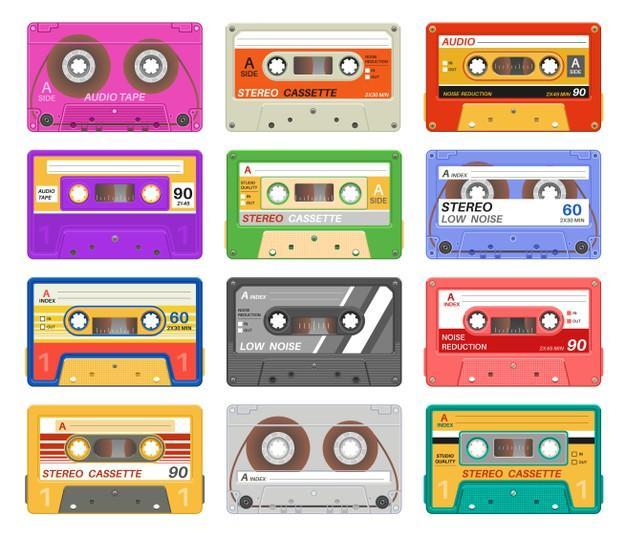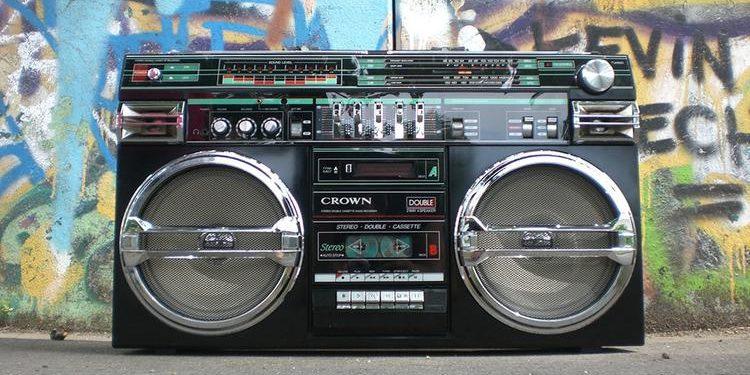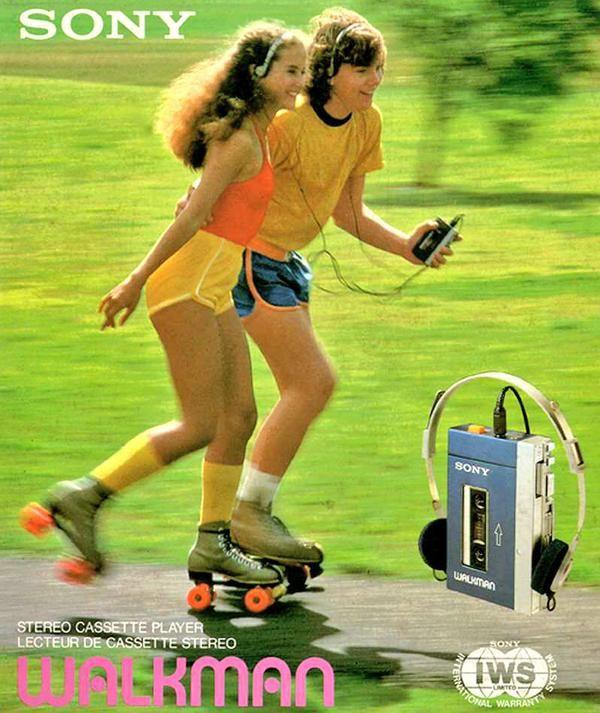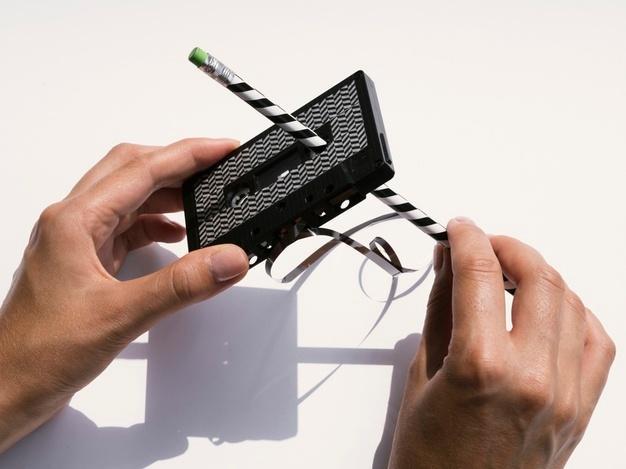Cassette tapes were a boom in the 80’s and 90’s. That’s how most people listened to music. How many of us had to unjam or properly rewind the tape with the help of a pencil? Nice memories of an amazing time when a revolutionary invention (though now almost extinct) defined a before and after in the music industry, pop culture and in our lives.
Let’s talk about cassettes
Cassette is perhaps the most popular audio storage and sound recording format of the 20th century. It consists of two miniature reels, between which a magnetic tape is passed inside a protective plastic housing. Two pairs of stereo tracks are available on the tape, one for each side (side A and side B).
It was introduced in Europe and the United States by the well-known manufacturer Philips between 1963 and 1964. It progressively became popular after the decision of this giant to license it for free to other electronic companies, this choice turned it into a popular option for music playback.
Cassette types

According to the magnetic material of the tape, they are classified into 4 types:
- Type I or normal type. They are made of gamma ferric oxide (Fe2O3) and were the original type of tapes. They use 120 µs equalization.
- Type II. Around 1970, 3M developed a cobalt process combined with a double-coating technique to increase the average tape output volume. At the same time, BASF introduced chromium dioxide (CrO2). This type of ribbon requires equalization of 70 µs.
- Type III. Sony experimented with a double-layer tape using both ferric oxide and chromium dioxide. It was called FerroChrome (FeCr). These tapes were only available for a short period of time in the 1970s.
- Type IV or metal cassettes. They also use 70 µs equalization and presented new advances and improvements in sound quality, and more resistance to wear.
Quality is usually a reflection of price, being Type I tapes the cheapest and Type IV tapes the most expensive. Type II tapes are considered CD quality and Type IV tapes are used for higher volume levels and Super Audio CDs.
The tape type is indicated by notches on the top of the cover. These allow the tape decks to automatically recognize the tape type and choose the polarization and equalization parameters accordingly. However, most modern designs lack this feature, and some only allow the use of type I tapes.
If Type II and Type IV tapes are used in a tape deck designed exclusively for Type I tapes, it will lead to sound distortion and poor quality. This explains why a lot of people didn’t like cassette tapes or had bad experiences with them, they were using portable cheap players to play them.
Also because many would record from the radio with an I-type cassette using a cheap portable player. Naturally, those who had such experiences would say that it was a terrible music storage and playback solution. But it was indeed a pioneering invention back in the day.
Despite the fact that they are not as widely used today, cassettes are still being produced. National Audio Company Inc still manufactures cassettes, even blank ones, and these are sold on Amazon.
Why was the cassette so famous?

The greatest contribution of the cassette was certainly making music something reachable for all social status and allowing people to listen to the music they wanted, wherever and whenever they wanted. Leading figures in the music industry of the time were able to enhance their popularity by reaching out to the popular classes and young audiences. A similar phenomenon to what happened with the later appearance of mp3, mp4, or iPod players.
By then, having the opportunity to store your favorite songs in a single unit and being able to take them anywhere was a total revolution. This allowed flourishing each one’s tastes and personalities, expressed in that mixtape with the tracks you wanted from the radio or from a vinyl disc. Another huge advantage is that when the tape began to lose its quality due to extensive use, the content could simply be recorded on a new cassette.
In addition to all this, artists from all over the world commented at that time that the cassette gave people the power to express themselves against the political oppression suffered in some nations. This was possible thanks to the messages conveyed by punk or rock among the youngest, genres heavily criticized for being unwanted influences on those populations. However, it is believed that it also helped to create a balance in Western culture.
The alternative for the music industry in the 1970s
Since it was first created, great efforts were made to improve the sound quality of the cassette. This was successfully acomplished with the introduction of Dolby noise reduction systems, which attracted new consumers and forced cassette large-scale production. In 1971, a new version was introduced which combined Dolby noise reduction with a chrome dioxide magnetic tape, making it a perfect format for the music industry.
Some tapes managed to sound almost as good as a CD and were a lot cheaper than them, costing almost half the price. Because of this and all of the above, the cassette became the best-selling format for almost 10 years.
Popularity spikes with the introduction of the Walkman

During the ’80s, the different cassette playback devices helped to raise their popularity. Cars had radios with tape decks to play cassettes or magnetic tapes. They also displaced vinyl and the record player at homes.
But there was one player that made a difference in the way music was consumed, and that was the Walkman. A small portable device with headphones, able to help its user take their favorite tracks with them wherever they went. Over time, these incorporated other features such as a recorder and AM/FM radio tuners. This further expanded the options for entertainment and became a must-have for the youngsters of the time.
Why was this alternative left aside?
As technology advanced, it was possible to create a digital format for audio storage and playback: the CD-ROM. Unfortunately, this ingenious option was not compatible with the players of its predecessor. Therefore, the cassette had no choice but to let this new invention take its place.
It was a slow transition, which lasted the entire decade of the 90s. It took the longest time to disappear from cars, since the CD had a hard time adapting to work despite the proper vibrations and movements of the vehicle. But once the 21st century began, the cassette became a pleasant memory.
Tips on how to extend the life of your cassettes

If you are one of those who still enjoy this format, you should consider that the duration of the tapes depends on several factors: how well you take care of them, the duration of the recording (the longer the recording, the thinner the tape, therefore the more prone it is to breakage), its exposure to sunlight, humidity, dust, bugs, heat or extreme cold. Despite all this, they can last up to 30 years.
There are some things we can do to prolong their lifespan. For example:
- Making sure that they are stored between 50 and 70 degrees weather and an approximate 20 to 40 percent humidity.
- Making sure to have the tapes on an extreme so either at the very end or at the very beginning.
- Storing them vertically prevents damage to the edges.
- And actually playing them make sure that the layers of tape do not stick to each other.
Like me, today many nostalgically recall their first cassettes and the hits they enjoyed from their favorite artists back in the day. I got inspired to create this blog post after discussing the topic during the latest episode of Hey, How’s It Going Show with Brandon. so, if you want to hear me discuss this live, just check the video below.
Sources:
Casete
LA HISTORIA DEL RADIO CASETE
La historia del cassette: la forma más popular de almacenar audio y música en los 80’
Casete
Connect With Nico Pengin
Facebook: NicoPengin
Twitter: @NicoPengin1
Blog: nicopengin.com




